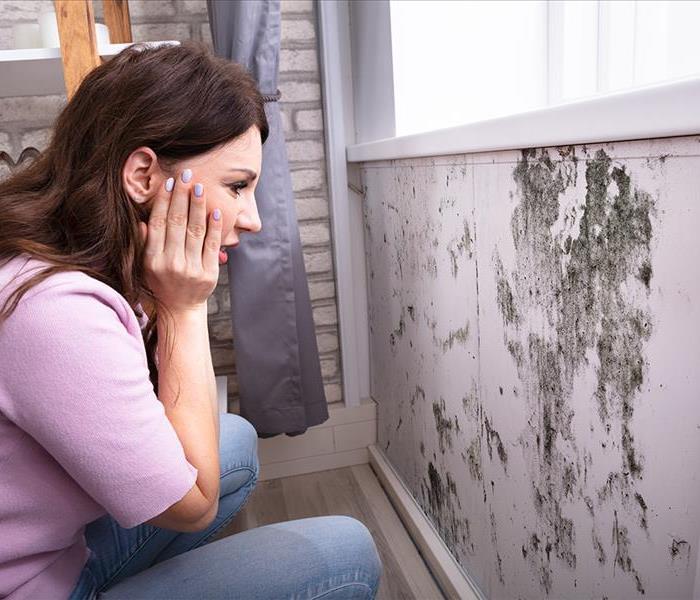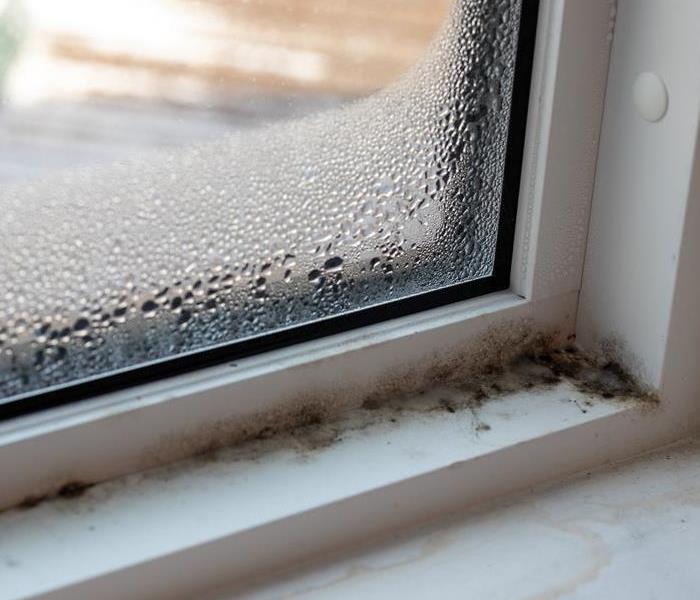Archived Mold Remediation Blog Posts
How to Deal with Mold in Your Home
2/5/2024 (Permalink)
Mold infestations can be a distressing discovery for homeowners. As a professional restoration company, we understand the importance of dealing with mold effectively. In this blog post, we'll provide you with a step-by-step guide, from a restoration company's perspective, on how to address and remove mold from your home.
Step 1: Identify the Source
Before you can effectively deal with mold, it's crucial to identify the source of moisture that is allowing it to thrive. Mold requires moisture to grow, so addressing the underlying issue is the first step. Common sources include leaks, poor ventilation, and water damage.
Step 2: Isolate the Area
To prevent mold spores from spreading to other parts of your home, isolate the affected area. Seal off the space using plastic sheeting and tape. Additionally, consider using an air purifier with a HEPA filter to capture airborne spores.
Step 3: Remove Contaminated Materials
Any porous materials that have been contaminated with mold, such as drywall or insulation, should be removed and properly disposed of. Mold can penetrate these materials, making thorough cleaning impossible.
Step 4: Clean and Disinfect
Use an appropriate cleaning solution to scrub non-porous surfaces where mold is present. After cleaning, use a disinfectant to kill any remaining spores. Ensure the affected area is completely dry.
Step 5: Repair the Source of Moisture
To prevent mold from returning, address the source of moisture. Repair leaks, improve ventilation, and make any necessary structural repairs to ensure that the area remains dry.
Step 6: Consider Professional Help
Mold removal can be a complex and labor-intensive process. If the infestation is extensive or if you have health concerns, it's advisable to seek professional help. Our teams have the expertise and equipment to handle large-scale mold remediation.
Mold removal is a task that should be taken seriously. Following the steps outlined above can help you effectively address mold infestations and create a safe and healthy living environment for you and your family. Call us at SERVPRO today to ensure that you get back to normal as soon as possible, like it never even happened.
Mold Tips - How to find and handle Mold
3/4/2020 (Permalink)
 Mold Tips - How to find and handle Mold
Mold Tips - How to find and handle Mold
Mold is a common issue in the humid climate of Charlotte NC and the greater Carolinas. Knowing what to look for and how to handle a mold problem are the first steps.
What is Mold?
- Mold is a fungus, a multicellular plant-like organism, that does not produce chlorophyll as plants do. Fungi include mildew, mushrooms and yeast.
- Fungi is everywhere and we breathe mold spores everyday. In normal doses, typical of outdoors, fungi are not a threat to human health and may even have positive effects.
- Molds ripen cheeses and give them flavor. Some mushrooms are deliciously good to eat. Yeasts cause fermentation that produce alcoholic beverages and some breads.
Causes of Indoor Mold Growth
- Mold releases tiny spores in order to reproduce. These tiny spores can become airborne when disturbed and settle on surfaces where they lie dormant for extended periods waiting for ideal growth conditions.
- The settled spores require three conditions to grow:
- Food source: Organic materials
- Temperature: 68-86 degrees
- Moisture: Relative humidity above 60%
- Spores can germinate after only 12 hours in some conditions. They more commonly germinate in the 24-48 hour range.
Once You Suspect Mold
Step 1: Contact an Industrial Hygienist (IH) or an Indoor Environmental Professional (IEP). An IH/IEP will perform a visual inspection and sample the air and surfaces where suspected mold growth is present. The samples are then sent to a lab to analyze and determine the type of mold that exists. Once the lab report is received the IH/IEP provides a report and outlines a protocol for a certified mold remediation contractor to adhere to.
Step 2: Contact SERVPRO to remediate your mold contamination. We will schedule an appointment for a production manager to visit the property and provide an estimated cost of services based upon the protocol written by the IH/IEP.
Step 3: Once the estimate is approved we will schedule a date to begin the mold remediation services.
Step 4: Upon completion of the mold remediation it is recommended that post clearance sampling be performed by the IH/IEP to ensure the remediation services were successful.
Prevention
- Keep humidity levels in the home below 60%.
- Ventilate and/or dehumidify attics, crawl spaces, and basements.
- Keep bathrooms dry and well ventilated
- Clean, dry or remove anything from your home that is water damaged
- Watch for condensation and wet spots.
Safely Preventing Mold Growth
10/22/2019 (Permalink)
Safely Preventing Mold Growth Clean up and dry out the building quickly (within 24 to 48 hours). Open doors and windows. Use fans to dry out the building.
• When in doubt, take it out! Remove all porous items that have been wet for more than 48 hours and that cannot be thoroughly cleaned and dried. These items can remain a source of mold growth and should be removed from the home. Porous, noncleanable items include carpeting and carpet padding, upholstery, wallpaper, drywall, floor and ceiling tiles, insulation material, some clothing, leather, paper, wood, and food. Removal and cleaning are important because even dead mold may cause allergic reactions in some people.
• To prevent mold growth, clean wet items and surfaces with detergent and water.
• Homeowners may want to temporarily store items outside of the home until insurance claims can be filed. If there is mold growth in your home, you should clean up the mold and fix any water problem, such as leaks in roofs, walls, or plumbing. Controlling moisture in your home is the most critical factor for preventing mold growth. Use a stiff brush on rough surface materials such as concrete. If you choose to use bleach to remove mold:
• Never mix bleach with ammonia or other household cleaners. Mixing bleach with ammonia or other cleaning products will produce dangerous, toxic fumes.
• Open windows and doors to provide fresh air.
• Wear non-porous gloves and protective eye wear.
• If the area to be cleaned is more than 10 square feet, consult the U.S. Environmental Protection Agency (EPA) guide titled Mold Remediation in Schools and Commercial Buildings. Although focused on schools and commercial buildings, this document also applies to other building types.
• Always follow the manufacturer’s instructions when using bleach or any other cleaning product.
• If you plan to be inside the building for a while or you plan to clean up mold, you should buy an N95 mask at your local home supply store and wear it while in the building. Make certain that you follow instructions on the package for fitting the mask tightly to your face. If you go back into the building for a short time and are not cleaning up mold, you do not need to wear an N95 mask.





 24/7 Emergency Service
24/7 Emergency Service

